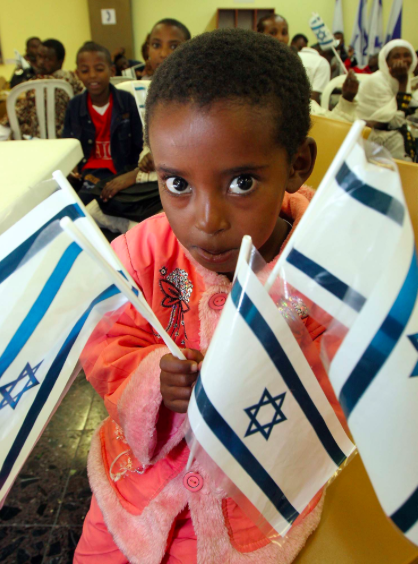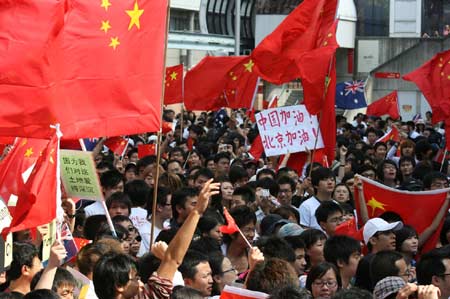There is a common, but misconceived, narrative in a number of mass-media forums that generates an image of the Jewish population in Israel as one monolithic group; as one unified voice. It is often the case that when racial tensions are discussed relating to Israel, your mind jumps to Jewish Israeli and Palestinian tensions or Jewish Israeli and Arab Israeli tensions. The tensions between Ethiopian-Israelis and the Ashkenazi (European descent) majority is often overlooked. However, due to the recent protests of Ethiopian Jewry in Israel, this illusion of a united Jewish majority in Israel is being shattered.
In early May, over a thousand Ethiopian Israeli Jewish citizens took to the streets to protest racism, unequal treatment and police brutality faced by the community. The protest began peacefully. Over the course of the day, however, it took a violent turn. Protestors began to throw rocks and bottles at police forces while the police began to respond with force. These protests are very reminiscent of the racially s purred American protests in Ferguson and Baltimore. Clearly, racial tensions do not begin and end in North America.
purred American protests in Ferguson and Baltimore. Clearly, racial tensions do not begin and end in North America.
The Migration
The migration of Jews to Israel is based on legislation dubbed the Law of Return. The Law of Return was created two years after the creation of Israel, in 1950, but was liberalized in 1970. The liberalization of the legislation in 1970 extended the definition of what it meant to be Jewish. The Kenneset (the Israeli Parliament) essentially adopted the definition that was established in the Nuremberg Trials, to include, “anyone the Nazis would persecute as a Jew, we will accept as a citizen.” This shifted the definition of a Jew away from the more narrow rabbinical definition which would only be one born to a Jewish mother or a convert.
The migration of Ethiopian Jews began in the early 1980s. Many were brought to Israel from Ethiopia in two separate airlift operations, one in 1984 and another in the 1992. These airlifts had a virtuous purpose; to [rescue] Ethiopians from an immense famine that was occurring at the time and return the Ethiopian-Jewish community to their ancestral homeland. However, immediately after immigration began so did problems with integration and racism. Ethiopian Jews faced issues gaining adequate employment and housing. By 2012, the statistics were clear. A 2012 study suggests that 41 percent of Ethiopian Israelis live below the poverty line, compared to 15 percent of the overall Israeli population. In the same light, the average income of the Ethiopian-Israeli community amounts to about two-third of the total Israeli population. Whether an immigrant or an Ethiopian-Israeli born in Israel, the Ethio pian-Israeli community has been on the periphery of Israeli society.
pian-Israeli community has been on the periphery of Israeli society.
Rising Racial Tensions
There are hundreds of complaints filed every year by members of the Ethiopian-Israeli community due to racism, segregation, and lack of social services, housing and education. Tensions did not flare up until a CCTV video emerged showing an Ethiopian-Israeli soldier being beaten up by two ‘regular’ Israeli police officers. The violence included punching and kicking the Ethiopian-Israeli soldier. This video has made it clear to Ethiopian-Israelis that racism in Israel is not simply latent, but is expressed outright through violence. This type of racialized violence impacts internal politics; it reduces citizens’ trust in their politicians, the political system, and public figures that are meant to act as safe guards.
Haaretz, an Israeli newspaper, took to the streets during the protests to interview participants. Dana Sibaho, 29, captured the essence of the protests. She poignantly expressed that, “our forefathers lived here, and we also have the right to live here. But what is going on now is simply a catastrophe. It is racism for the sake of racism. You look for a job today, and even if you’re the best around, there’s a price. Your colour carries a price.” Sibaho brought the sentiment home, asserting that the Ethiopian community “will not stay silent any longer. We [Ethiopian-Israelis] are not our parents’ generation, who kept quiet, kept their heads down and said ‘amen’ to everything. That period is over. We are a new generation fighting for our rights.”
Time to Re-Think
Safe to say, the state of Israel is not composed of a unified Jewish majority. A number of media sources have gotten this very wrong. Tensions and cleavages exist within this society. To truly be one unified society, if that is ever possible, the Israeli government must look in the mirror and correct the way it treats a vulnerable segment of the population within its own society.
NOTE: The author notes the plights of Palestinian and Arab communities within Israel, however, this article is focusing on the inner division within the Jewish communities in Israel.




